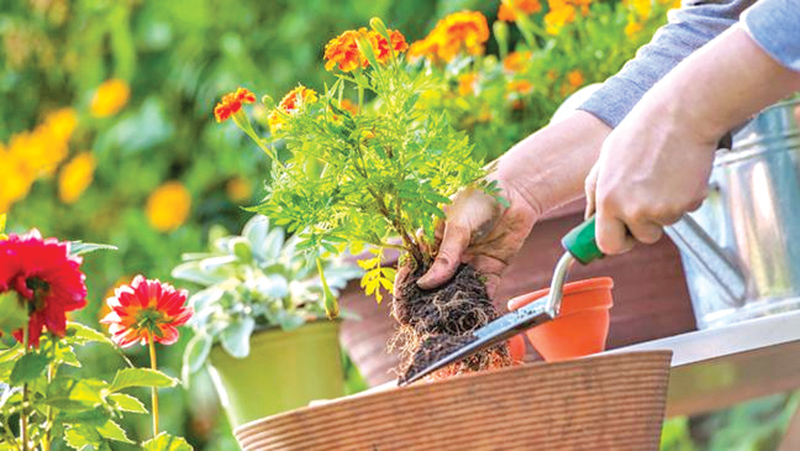Getting a healthy and beautiful lawn and garden isn't rocket science, but it does take time, patience and the right information. Here are some useful tips to maintain a beautiful garden.
For healthy grass, adjust your soil pH
Soil pH (acidity level) is very important, and just because your dirt looks rich and black doesn't mean it's the right pH for grass. Take samples around the yard and send them to your local extension service for testing. You can fix soil pH problems by adding lime to raise the pH or iron to lower it. Most grasses prefer a pH of 6.0 to 7.2.
Grass in shade has different needs than grass in sun
People tend to overapply fertilizer to shady areas because the grass is struggling. But that just kills it faster! A lawn in full sun and a shaded lawn that may get only two to four hours of direct sun have different water and fertilizer needs. The grass in shady areas needs less water because less evaporates, and it needs less fertilizer because with less sun it doesn't grow as much. When you go into shade, shift the controls on the spreader so you're spreading about half the amount. Consider a tree's final height and width when planting
Before you buy a tree, look at the shade pattern it'll have when it's grown. You're going to start with this cute little tree, and it's going to look good when you plant it near the house, but once it grows up, it's going to be a problem with the roof and gutters.
Healthy soil means fewer weeds
Lawns that are nutrient-stressed are a breeding ground for weeds, so the best defense is a healthy lawn. Test the soil to see what type and quantity of fertilizer are needed to help your lawn. Proper fertilization improves lawn health, so grass can compete better and crowd out weeds— without a lot of weed killer.
Ground covers control erosion and weeds
Ground covers are an easy way to soften rock features and patios or control erosion on slopes. If the soil's good, kill the existing vegetation and leave it in place on the slope to stabilize the bank and serve as mulch. Then plant through the layer of dead material. Add another layer of shredded bark or other mulch after planting to conserve moisture and reduce weed problems while your ground cover becomes established.
Tailor products and advice to your yard
One-size-fits-all doesn't work for fertilizer, weed killer and grass seed, even though that's what the chain stores sell. Lawn products that work great in Georgia clay may not be good for Kansas or Oregon. The best way to find out about growing conditions in your area and what to put on your lawn, and when, is to talk to a local garden center or your agricultural extension service.
Plastic edging works well on curves
Plastic edging will go up and down hills as long as you spike it in well, but over time, straight lines will get a little wavy.
Use shredded mulch around plants
Rock mulch will reflect heat back into shrubs and heat up shallow roots, so it's not as good for the health of the plant. Shredded mulch holds moisture better and stays cooler.
Use a mulching mower
As long as at least a quarter of the grass is still showing through the leaves, you can mulch the leaves with your mower. But if the lawn is 80 to 90 percent covered, you'd better rake some of it up. That much mulch creates too much residue, it won't degrade well, and in spring it'll be a matted mess that kills the grass.
Top dress with cedar or cypress mulch
If you're mulching a big area, use a cheaper hardwood mulch for most of it, then top-dress it with cedar or cypress. You can also top-dress old, ratty-looking mulch—just sprinkle on a fresh 1-inch layer and it'll look brand new. That way you're not paying for something you don't see.
Protect trees with mulch
Mulch protects trees from mower wounds
Protect exposed tree roots at the surface of the yard by mulching around the root area. A 2- to 4-inch layer of wood chips or shredded bark protects the roots and creates a good growing environment. Planting grass right up to a tree trunk is a common practice, but it's not good for the tree because grass and trees compete for water and nutrients. The tree will be healthier and grow faster if you put a 3- to 4-ft. border of mulch around it instead of grass.
-familyhandyman.



Add new comment